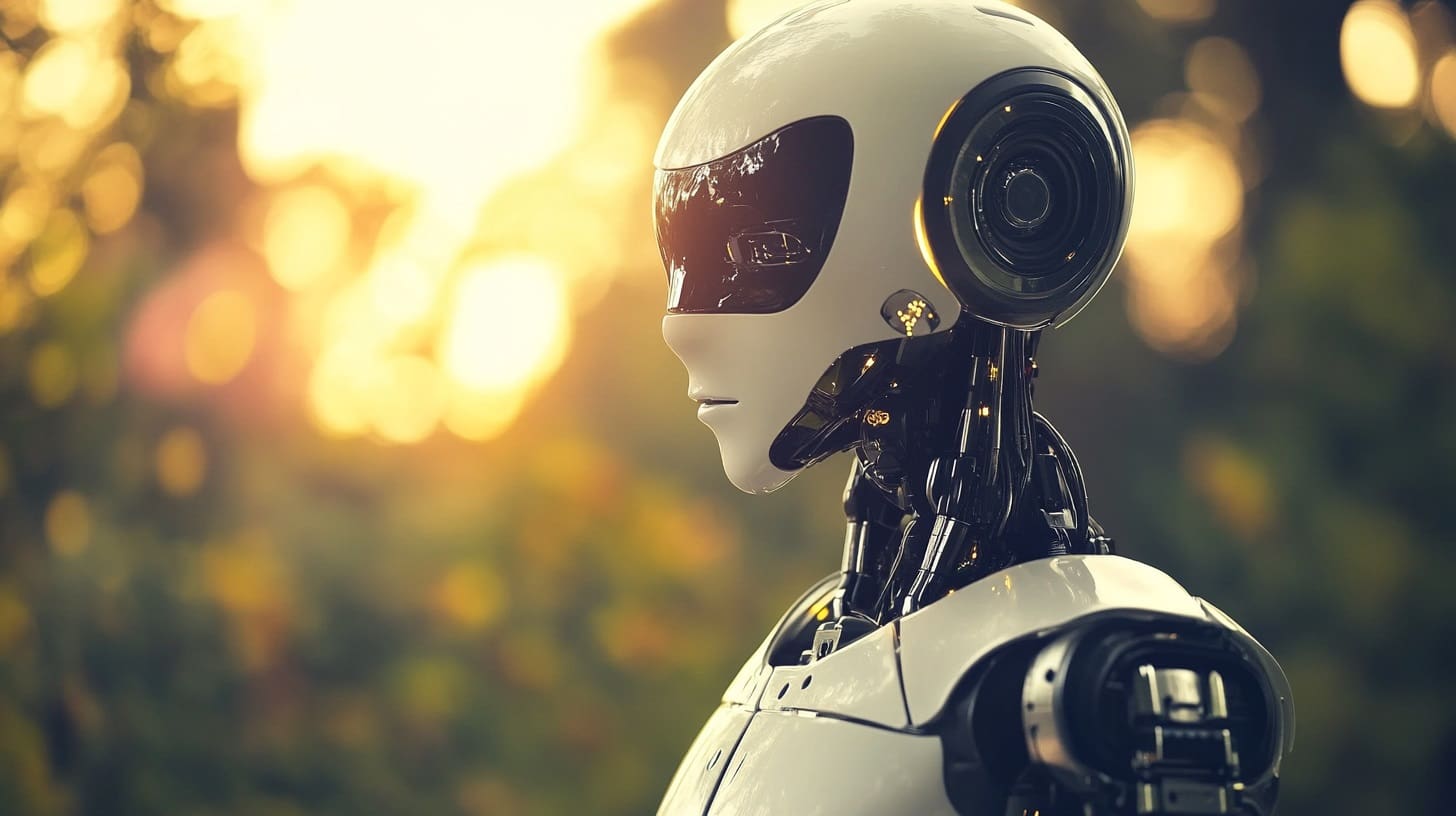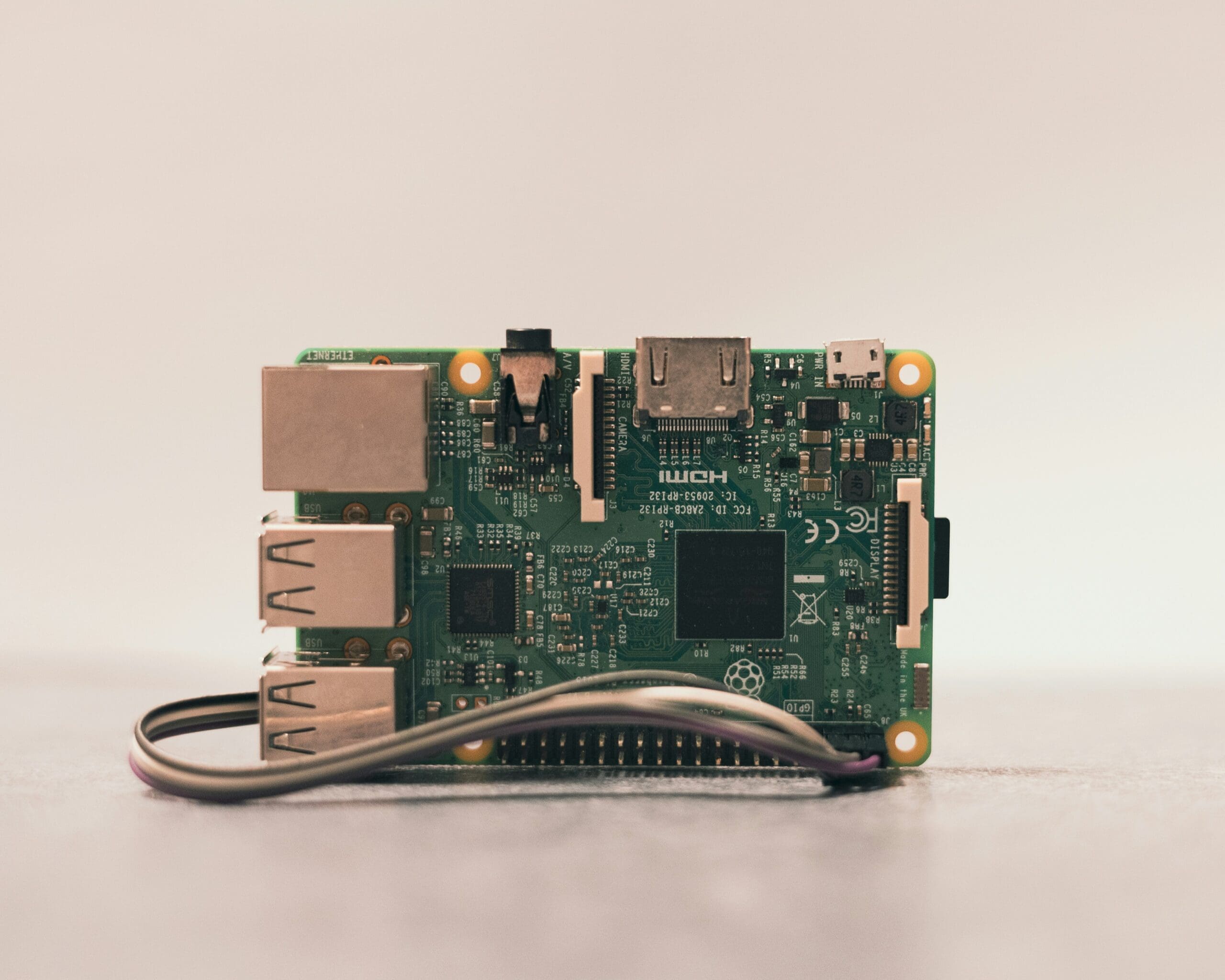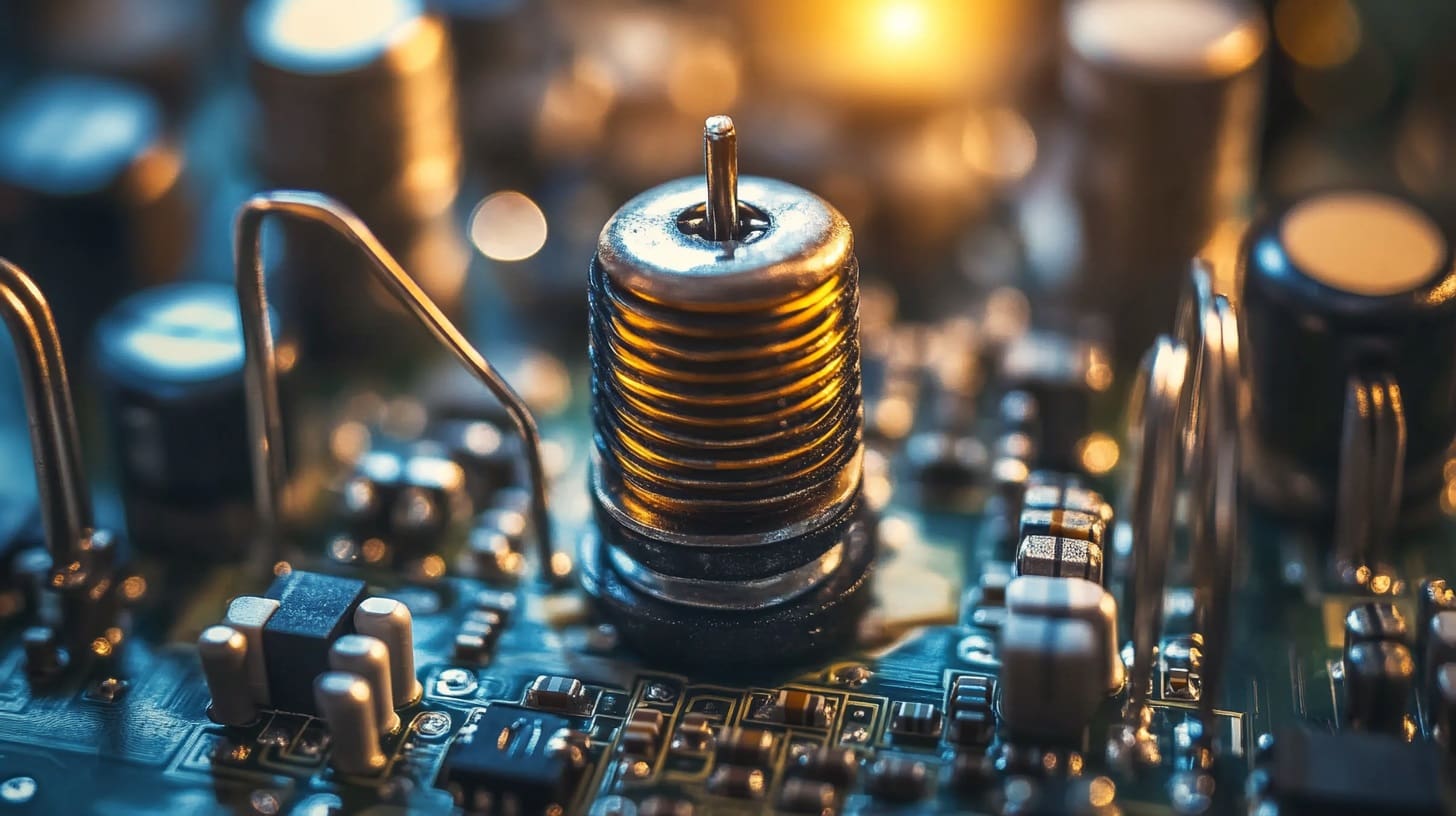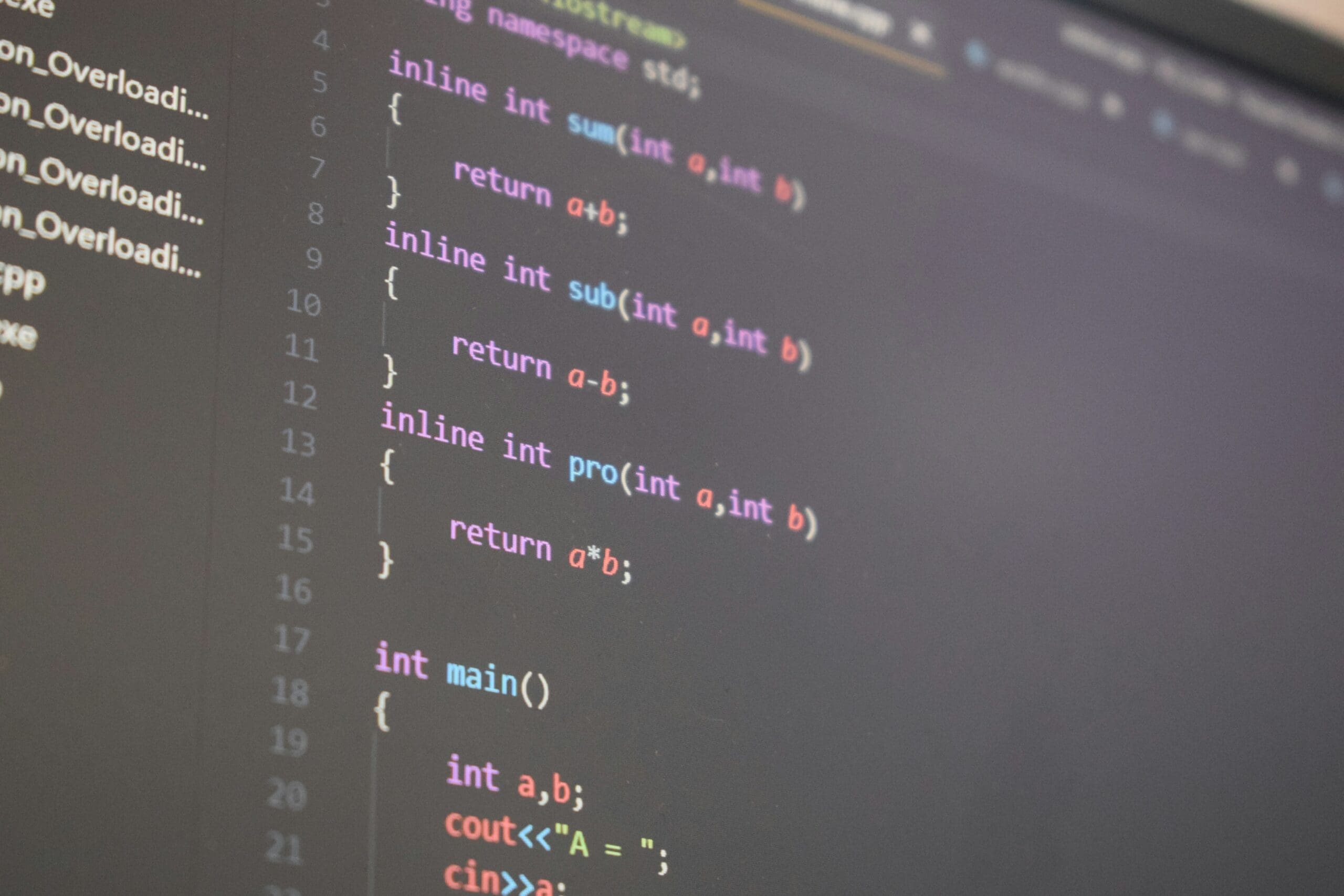Robotics, the science and technology of creating machines that can perform tasks autonomously or semi-autonomously, has roots that stretch back thousands of years. The concept of mechanical beings designed to mimic human actions is not a modern invention; it has been part of human imagination and innovation since ancient times. From mythological creatures and early automata to the sophisticated robots of today, the history of robotics is a fascinating journey that reflects humanity’s enduring desire to understand and replicate its own capabilities.
Ancient Origins of Robotic Concepts
The earliest references to what we might now consider robotics can be found in ancient mythology and literature. These early concepts, though fantastical, laid the groundwork for the mechanical inventions that would follow in later centuries.
Mythological Automata: In various cultures, myths and legends feature stories of artificial beings created to serve gods or humans. In Greek mythology, the god Hephaestus, known as the god of fire and metalworking, is said to have crafted mechanical servants out of metal. One of the most famous of these is Talos, a giant bronze man who guarded the island of Crete, patrolling its shores to protect it from invaders. Talos was an early embodiment of the idea that a mechanical being could possess the strength and abilities far surpassing those of humans.
Similarly, in ancient Chinese lore, there are stories of Yan Shi, an artificer who is said to have created a life-sized mechanical human being, complete with moving parts, thousands of years ago. These stories, though mythical, indicate an early fascination with the idea of creating machines that could emulate human actions.
Early Automata: Moving from myth to reality, the first known examples of automata—self-operating machines—date back to ancient civilizations. The earliest documented automaton is the pigeon of Archytas of Tarentum, a Greek philosopher and mathematician from the 5th century BCE. Archytas’ pigeon was a wooden bird powered by steam or compressed air, capable of flying short distances. Although simple by modern standards, this creation was a significant step in demonstrating the principles of automation.
Another prominent example from antiquity is the work of Hero of Alexandria, a Greek engineer and mathematician in the 1st century CE. Hero is credited with designing various automata, including a water-powered device that could move and produce sound, and a simple programmable cart. His inventions were primarily used for entertainment and religious ceremonies, showcasing the potential of automated machines to astonish and engage audiences.
Al-Jazari, an inventor and engineer from the 12th-13th century (1136–1206 CE), is renowned for his pioneering work in mechanical engineering and robotics. His contributions laid the foundation for modern automation and robotics. Al-Jazari lived during the Islamic Golden Age and worked in the Artuqid court in Diyarbakir, Anatolia (modern-day Turkey). Al-Jazari authored “The Book of Knowledge of Ingenious Mechanical Devices” in 1206 CE, describing 100 mechanical devices and providing detailed illustrations and instructions for building them. This book is considered one of the most significant texts in the history of mechanical engineering and robotics. Al-Jazari’s contributions are celebrated as a cornerstone of robotics and mechanical engineering. His innovations illustrate the rich scientific and technological advancements. Modern scholars often refer to him as the “Father of Robotics.”
The Renaissance and the Birth of Mechanical Ingenuity
The Renaissance period marked a significant resurgence in scientific inquiry and mechanical invention. The era’s thinkers and inventors were inspired by classical texts and began exploring new ways to create machines that could perform tasks traditionally done by humans.
Leonardo da Vinci’s Mechanical Creations: Leonardo da Vinci, the quintessential Renaissance man, made numerous contributions to the early concepts of robotics. Da Vinci was fascinated by the mechanics of motion and is known for his detailed studies of human anatomy, which he used to inform his designs. Among his many inventions, da Vinci sketched plans for a mechanical knight, which could sit, wave its arms, and move its head. This “robot knight” was designed around 1495, and though it was never built in his lifetime, it demonstrated da Vinci’s forward-thinking approach to mechanical design.
Da Vinci also designed various other automata, including a self-propelled cart that could move on its own—arguably an early precursor to modern autonomous vehicles. His inventions, while not realized during his time, laid important theoretical groundwork for future developments in robotics.
Clockwork Automata and Mechanical Toys: The Renaissance also saw the rise of intricate clockwork automata, which were complex mechanical devices powered by gears and springs. These automata were often created for entertainment and were popular among the European aristocracy. For example, the 16th century witnessed the creation of mechanical toys and clocks that featured moving figures, such as animals, people, or mythological creatures, all driven by elaborate clockwork mechanisms.
One of the most famous examples is the Strasbourg Cathedral’s astronomical clock, completed in the 16th century, which features an intricate procession of automatons that move in synchronized sequences. These automata showcased the growing sophistication of mechanical engineering during the Renaissance and the burgeoning interest in creating lifelike movements through machinery.
The Age of Enlightenment and the Industrial Revolution
The Enlightenment and the subsequent Industrial Revolution were periods of immense intellectual and technological advancement. During these times, the concept of robotics evolved from mere mechanical curiosities to machines with practical applications in industry and daily life.
The Mechanical Turk and Artificial Intelligence: One of the most famous automata of the Enlightenment era was the Mechanical Turk, a chess-playing machine created by Wolfgang von Kempelen in 1770. The Turk appeared to be an automaton capable of playing chess against human opponents and even defeating them. However, the Turk was not a true robot; it concealed a human chess master who controlled the machine from inside. Despite being a hoax, the Mechanical Turk captured the public’s imagination and sparked discussions about artificial intelligence and machine thinking, concepts that would become central to modern robotics.
The Jacquard Loom and Programmable Machines: The Industrial Revolution brought about significant advancements in automation, particularly in textile manufacturing. In 1804, Joseph Marie Jacquard invented the Jacquard loom, a programmable loom that used punched cards to control the weaving of patterns. This innovation allowed for the automatic production of complex textile designs and is considered one of the earliest examples of a programmable machine. The punched card technology used in the Jacquard loom would later influence the development of early computers and robotics.
Babbage and the Analytical Engine: Charles Babbage, often referred to as the “father of the computer,” conceptualized the Analytical Engine in the mid-19th century. This machine was designed to perform complex calculations using a system of gears and punched cards, similar to those used in the Jacquard loom. While the Analytical Engine was never completed during Babbage’s lifetime, its design laid the groundwork for modern computing and, by extension, robotics. Babbage’s work, along with that of his collaborator Ada Lovelace, who is credited with writing the first algorithm intended for a machine, marked a significant step toward the development of programmable, autonomous machines.
Automata and Early Robots of the 19th Century
The 19th century continued to see advancements in mechanical automata, with inventors pushing the boundaries of what these machines could do. These automata were often intricate, lifelike, and capable of performing specific tasks, bridging the gap between mere mechanical toys and the robots that would emerge in the 20th century.
The Writing Automaton: One of the most remarkable automata of the 19th century was the writing automaton created by Swiss watchmaker Pierre Jaquet-Droz in the late 18th century. Known as “The Writer,” this automaton could be programmed to write different sentences with a quill pen, demonstrating an astonishing level of mechanical precision. Jaquet-Droz’s automaton, along with his other creations like “The Draughtsman” and “The Musician,” were marvels of their time and are still functional today. These machines not only showcased the advanced engineering skills of their creators but also hinted at the potential for machines to replicate complex human tasks.
Industrial Automata: As the 19th century progressed, the focus of automata shifted towards industrial applications. The development of steam power and the increasing mechanization of industry led to the creation of automated machines designed to perform specific tasks more efficiently than human workers. These early industrial robots were primarily used in manufacturing processes, such as textile production and metalworking, where precision and speed were essential.
Towards the Modern Era: By the end of the 19th century, the stage was set for the development of the first true robots in the 20th century. The growing understanding of electricity, mechanics, and later, electronics, would combine with the theoretical foundations laid by earlier inventors to create machines that could not only perform tasks but also be programmed, learn, and adapt to their environments.
The 20th Century: The Birth of Modern Robotics
The 20th century was a period of rapid technological advancement that saw the transition from simple mechanical automata to the sophisticated robots we know today. This era was marked by significant milestones in robotics, driven by the convergence of various scientific and engineering disciplines, including electronics, computing, and artificial intelligence. As society moved through the industrial age and into the digital era, robotics evolved from theoretical concepts and rudimentary machines into practical tools and complex systems with far-reaching applications.
The Early 20th Century: The Dawn of Robotics
The early 20th century was a time of experimentation and innovation in robotics, with inventors and engineers exploring new ways to automate tasks and create machines that could perform human-like functions.
Karel Čapek and the Term “Robot”: The word “robot” was first introduced to the world in 1920 by Czech playwright Karel Čapek in his play R.U.R. (Rossum’s Universal Robots). In the play, robots are artificial beings created by humans to perform laborious tasks, eventually leading to a rebellion against their creators. The term “robot,” derived from the Czech word “robota,” meaning “forced labor” or “drudgery,” quickly entered the global lexicon and became synonymous with mechanical beings designed to emulate human actions. While Čapek’s robots were fictional, the play highlighted the ethical and societal implications of creating autonomous machines, themes that continue to resonate in discussions about robotics today.
Early Humanoid Robots: The 1920s and 1930s saw the creation of some of the first humanoid robots, designed to mimic human appearance and movements. One of the most famous early robots was “Elektro,” a 7-foot-tall humanoid robot built by Westinghouse Electric Corporation and unveiled at the 1939 New York World’s Fair. Elektro could walk, talk, and respond to voice commands, making it a marvel of its time and a symbol of the potential of robotics. Another early example is “Gakutensoku,” a humanoid robot created in Japan in 1928 by biologist Makoto Nishimura. Gakutensoku, meaning “learning from the laws of nature,” was designed to move its head and hands, change facial expressions, and write messages using a pen.
Teleoperators and Remote-Controlled Robots: Another significant development in the early 20th century was the invention of teleoperators, which allowed humans to remotely control machines. These early robots were used primarily in hazardous environments where direct human presence was too dangerous. For example, during the 1940s, remote-controlled robots were employed to handle radioactive materials in nuclear research facilities. This concept of remote operation would later evolve into the field of telerobotics, which remains crucial in areas such as space exploration and underwater exploration.
The Mid-20th Century: The Rise of Industrial Robotics
The mid-20th century marked the beginning of robotics’ transition from experimental machines to practical, industrial tools. This period saw the invention of the first programmable robots, which were designed to perform repetitive tasks with precision and efficiency, revolutionizing manufacturing processes.
Unimate: The First Industrial Robot: The development of the first industrial robot, Unimate, is one of the most significant milestones in the history of robotics. Invented by American engineer George Devol in 1954 and later developed by Joseph Engelberger, Unimate was designed to perform tasks that were dangerous or monotonous for human workers. In 1961, Unimate was installed at a General Motors plant, where it was used to lift and stack hot metal parts in the manufacturing of automobiles. This innovation marked the beginning of the robotic revolution in the manufacturing industry, leading to the widespread adoption of robots on assembly lines around the world.
The Advent of Computer Control: The 1960s and 1970s were pivotal decades for robotics, as advancements in computer technology enabled more sophisticated control systems for robots. The introduction of digital computers allowed for the development of robots that could be programmed to perform a wide range of tasks, from simple repetitive motions to complex sequences of operations. During this period, researchers at institutions like MIT and Stanford University began exploring the use of computers to control robotic arms, laying the groundwork for modern robotics programming languages and control systems.
Shakey the Robot: One of the first robots to combine artificial intelligence with physical movement was “Shakey,” developed by the Stanford Research Institute (SRI) in the late 1960s. Shakey was a mobile robot equipped with sensors, cameras, and a computer that allowed it to perceive its environment, make decisions, and navigate through spaces autonomously. Shakey could plan its actions based on its surroundings, making it one of the first robots to demonstrate the potential of AI in robotics. Although primitive by today’s standards, Shakey represented a significant step forward in the development of intelligent, autonomous robots.
The Late 20th Century: Robotics Expands Beyond Industry
As the 20th century progressed, robotics began to extend its reach beyond the industrial sector, finding applications in areas such as healthcare, entertainment, and space exploration. This period also saw the emergence of advanced AI and robotics research, leading to the creation of more sophisticated and versatile robots.
Robotics in Healthcare: The late 20th century witnessed the introduction of robots in the medical field, where they were used to assist in surgeries, rehabilitation, and patient care. One of the earliest and most successful examples is the “PUMA 560,” a robotic arm developed in 1985 by Unimation, which was used to perform a stereotactic biopsy—a minimally invasive surgical procedure. The success of this procedure demonstrated the potential of robotics in enhancing surgical precision and paved the way for the development of more advanced surgical robots, such as the da Vinci Surgical System, which became widely used in the 2000s.
Robotics in Space Exploration: The late 20th century also saw significant advancements in the use of robotics for space exploration. NASA’s Viking missions in the 1970s, which sent the first robots to Mars, laid the foundation for future exploration of the Red Planet. These early robots, equipped with cameras, sensors, and scientific instruments, were able to capture images, analyze soil samples, and transmit data back to Earth. The success of these missions demonstrated the importance of robotics in exploring environments that are inaccessible or too dangerous for humans.
The Rise of Personal Robots: In addition to industrial and medical applications, the late 20th century saw the emergence of personal robots designed for use in homes and everyday life. One of the first commercially available personal robots was the “Roomba,” a robotic vacuum cleaner introduced by iRobot in 2002. Although developed towards the end of the century, the concept of personal robots can be traced back to earlier innovations in the 1980s and 1990s, such as Sony’s AIBO robotic dog and the Tomy Omnibot. These early personal robots were designed to perform simple tasks, entertain, and interact with humans, showcasing the potential for robotics to enhance daily life.
The Evolution of Artificial Intelligence in Robotics: The advancement of artificial intelligence played a crucial role in the evolution of robotics during the late 20th century. AI research during this period focused on developing algorithms that could enable robots to learn from their environments, recognize patterns, and make decisions autonomously. The development of machine learning techniques, neural networks, and expert systems contributed to the creation of robots that could perform more complex tasks and interact with humans in more natural and intuitive ways.
Robotics Research Institutions and Innovations
The late 20th century also saw the establishment of several key research institutions and organizations dedicated to advancing robotics technology. These institutions played a significant role in pushing the boundaries of what robots could do and exploring new applications for robotics in various fields.
MIT’s Artificial Intelligence Laboratory: The Massachusetts Institute of Technology (MIT) has been a leading institution in robotics research since the 1950s. Its Artificial Intelligence Laboratory, established in 1959, became a hub for pioneering research in AI and robotics. Notable projects include the development of robotic arms, mobile robots, and AI-driven systems capable of learning and adapting to new tasks. MIT’s work laid the foundation for many of the robotics technologies we use today and continues to be at the forefront of robotics innovation.
Stanford University’s Robotics Laboratory: Another key player in the development of robotics was Stanford University, where researchers like John McCarthy and Marvin Minsky made significant contributions to AI and robotics. Stanford’s Robotics Laboratory, established in the 1960s, focused on developing robots that could interact with their environments and perform tasks autonomously. The laboratory’s work on Shakey the Robot and later projects in robotics vision and manipulation have had a lasting impact on the field.
Japan’s Role in Robotics: Japan emerged as a leader in robotics during the late 20th century, particularly in the development of industrial robots and humanoid robots. Japanese companies like Kawasaki, FANUC, and Honda made significant advancements in robot design, leading to the widespread adoption of robots in manufacturing. Honda’s ASIMO robot, introduced in 2000, was one of the most advanced humanoid robots of its time, capable of walking, running, and interacting with humans. Japan’s contributions to robotics have been instrumental in shaping the global robotics industry and continue to influence developments in the field.
The 21st Century: The Age of Advanced Robotics and AI
The 21st century has ushered in an era of unprecedented advancements in robotics, driven by rapid developments in artificial intelligence (AI), machine learning, and sensor technologies. Robots have become more autonomous, intelligent, and versatile, finding applications across a wide range of industries and changing the way we live and work. As we look to the future, the potential of robotics seems limitless, with ongoing innovations promising to redefine the boundaries of what robots can achieve.
The Rise of AI-Powered Robotics
One of the most significant developments in robotics in the 21st century is the integration of AI and machine learning, which has dramatically enhanced the capabilities of robots. These technologies enable robots to process vast amounts of data, learn from their experiences, and make decisions in real-time, allowing them to perform tasks that were once considered too complex or unpredictable for machines.
Autonomous Robots: Autonomous robots, capable of operating without direct human control, have become increasingly prevalent in various sectors. These robots are equipped with AI that allows them to navigate their environments, adapt to new situations, and perform tasks with minimal human intervention. Autonomous drones, self-driving cars, and delivery robots are just a few examples of how AI-powered robotics is transforming industries such as logistics, transportation, and agriculture.
Robotics and Deep Learning: Deep learning, a subset of machine learning, has played a crucial role in advancing robotics. By using neural networks that mimic the human brain, deep learning enables robots to recognize patterns, interpret sensory data, and make complex decisions. This has led to significant improvements in areas such as computer vision, natural language processing, and robotic manipulation. For example, robots equipped with deep learning algorithms can now identify objects, understand spoken language, and even learn to perform new tasks by observing human behavior.
Collaborative Robots (Cobots): Collaborative robots, or cobots, are designed to work alongside humans in shared environments. Unlike traditional industrial robots, which operate in isolation, cobots are equipped with advanced sensors and AI that allow them to safely interact with humans and adapt to their needs. Cobots are increasingly used in manufacturing, healthcare, and service industries, where they assist with tasks such as assembly, inspection, and patient care. Their flexibility, ease of use, and ability to work collaboratively with humans have made them a popular choice for businesses looking to enhance productivity and safety.
Robotics in Healthcare: Revolutionizing Medicine
The healthcare industry has been one of the biggest beneficiaries of advancements in robotics, with robots playing a critical role in enhancing patient care, improving surgical outcomes, and advancing medical research.
Surgical Robots: Surgical robots have revolutionized the field of surgery, enabling minimally invasive procedures that reduce patient recovery times and minimize the risk of complications. The da Vinci Surgical System, one of the most widely used surgical robots, allows surgeons to perform delicate procedures with greater precision and control. Equipped with high-definition cameras and robotic arms, the da Vinci system translates the surgeon’s hand movements into micro-movements of surgical instruments, allowing for enhanced accuracy. The success of robotic-assisted surgeries has led to their adoption in a variety of specialties, including urology, gynecology, and cardiac surgery.
Robotics in Rehabilitation: Robots are also making significant strides in the field of rehabilitation, helping patients recover from injuries or surgeries by providing consistent, repetitive exercises that promote healing. Robotic exoskeletons, for example, are wearable devices that support and enhance the movement of patients with mobility impairments. These exoskeletons can be used to help stroke survivors regain their ability to walk or assist individuals with spinal cord injuries in regaining mobility. The use of robotics in rehabilitation not only improves patient outcomes but also allows for more personalized and effective therapy programs.
Medical Robots in Pandemic Response: The COVID-19 pandemic highlighted the potential of robotics in public health and crisis response. Robots were deployed in hospitals and public spaces to perform tasks such as disinfecting surfaces, delivering supplies, and screening patients, reducing the risk of virus transmission to healthcare workers. In some cases, robots were even used to perform remote medical consultations, allowing doctors to assess and treat patients without direct contact. The pandemic underscored the importance of robotics in enhancing healthcare delivery and managing future public health crises.
Robotics in Everyday Life
As robotics technology becomes more advanced and accessible, robots are increasingly becoming a part of our everyday lives. From smart home devices to personal assistants, robots are enhancing convenience, efficiency, and entertainment in our daily routines.
Smart Home Robots: Smart home technology has brought robots into our homes, where they assist with a variety of tasks. Robotic vacuum cleaners, such as the Roomba, have become commonplace, autonomously navigating homes to clean floors with minimal human intervention. Other smart home robots include lawn mowers, window cleaners, and even robotic kitchen assistants that can prepare meals. These robots are often integrated with smart home ecosystems, allowing users to control them via voice commands or mobile apps, making home management more convenient and efficient.
Personal Assistants and Companion Robots: Personal assistant robots, powered by AI, are designed to interact with users, provide information, and assist with daily tasks. Devices like Amazon Echo and Google Home, though not robots in the traditional sense, function as AI-driven personal assistants that can control smart home devices, set reminders, answer questions, and more. In addition to these, companion robots like Sony’s Aibo or Jibo are designed to provide emotional support and companionship, especially for the elderly or those living alone. These robots can recognize faces, respond to voice commands, and engage in basic conversations, making them valuable tools for improving mental well-being and reducing loneliness.
Educational Robots: Robots are also playing an increasingly important role in education, helping to teach students about science, technology, engineering, and mathematics (STEM). Educational robots like LEGO Mindstorms, VEX Robotics, and Ozobot are used in classrooms around the world to engage students in hands-on learning experiences. These robots can be programmed to perform specific tasks, such as navigating mazes or solving puzzles, helping students develop critical thinking and problem-solving skills. The use of robots in education is not only enhancing student engagement but also preparing the next generation of engineers and scientists for careers in robotics and AI.
Robotics in Space Exploration and Beyond
The exploration of space has always been a key area for robotics, and the 21st century has seen remarkable achievements in this domain. Robots are essential tools for exploring environments that are too dangerous or inaccessible for humans, such as the surfaces of other planets or the depths of the ocean.
Mars Rovers and Planetary Exploration: NASA’s Mars rovers, including Spirit, Opportunity, Curiosity, and Perseverance, have played a crucial role in exploring the Red Planet. These robots are equipped with cameras, scientific instruments, and autonomous navigation systems that allow them to traverse the Martian terrain, analyze soil and rock samples, and search for signs of past life. The data collected by these rovers has provided invaluable insights into the geology and climate of Mars, helping scientists better understand the planet’s history and potential for future human exploration.
Robotics in Space Habitation: As space agencies and private companies plan for human missions to the Moon, Mars, and beyond, robots will be essential for building and maintaining space habitats. Robots like NASA’s Robonaut and the European Space Agency’s CIMON are designed to assist astronauts by performing tasks such as repairs, maintenance, and even scientific experiments. These robots can operate in microgravity environments and perform tasks that are too complex or dangerous for humans. The development of autonomous construction robots is also being explored, with the goal of using them to build habitats on other planets using local materials.
Underwater Robotics and Exploration: In addition to space exploration, robotics is also playing a critical role in exploring the depths of the ocean. Underwater robots, also known as remotely operated vehicles (ROVs) and autonomous underwater vehicles (AUVs), are used to explore ocean floors, shipwrecks, and underwater ecosystems. These robots are equipped with cameras, sonar, and manipulators that allow them to capture images, collect samples, and perform tasks in environments that are otherwise inaccessible to humans. Underwater robotics is contributing to our understanding of marine biology, geology, and climate change, and is also being used in industries such as oil and gas exploration and environmental monitoring.
The Future of Robotics: Emerging Trends and Ethical Considerations
As robotics continues to advance, several emerging trends and ethical considerations are shaping the future of the field. These trends include the development of more intelligent and autonomous robots, the increasing integration of robots into society, and the potential for new applications in areas such as medicine, defense, and environmental conservation.
Artificial General Intelligence (AGI): One of the most ambitious goals in robotics and AI is the development of Artificial General Intelligence (AGI), a form of AI that can perform any intellectual task that a human can. While current AI systems are specialized and limited to specific tasks, AGI would have the ability to learn, reason, and adapt to new situations, making it capable of performing a wide range of tasks across different domains. The pursuit of AGI raises significant ethical questions, including concerns about the potential impact on employment, privacy, and security, as well as the broader implications for society.
Ethical AI and Robotics: As robots become more integrated into society, ethical considerations are becoming increasingly important. Issues such as data privacy, algorithmic bias, and the potential for job displacement are critical challenges that need to be addressed. Ensuring that robots are designed and used in ways that are fair, transparent, and beneficial to all members of society is essential for the responsible development of robotics technology. This includes establishing ethical guidelines and regulatory frameworks that govern the use of AI and robotics in various sectors.
Human-Robot Collaboration and Trust: Building trust between humans and robots is another key challenge for the future of robotics. As robots become more autonomous and capable of performing tasks alongside humans, ensuring that they are safe, reliable, and predictable is crucial. Research in human-robot interaction (HRI) is focused on developing robots that can understand human intentions, communicate effectively, and work collaboratively in shared environments. This research is essential for the successful integration of robots into workplaces, homes, and public spaces.
The Ongoing Journey of Robotics Innovation
The history of robotics is a testament to human ingenuity, curiosity, and the relentless pursuit of innovation. From the earliest mechanical automata to the sophisticated AI-powered robots of today, robotics has evolved through centuries of experimentation, discovery, and technological advancement. As we move further into the 21st century, the potential of robotics continues to expand, promising new possibilities for exploration, healthcare, industry, and everyday life.
The journey of robotics is far from over. With each new breakthrough, we are reminded of the profound impact that robots can have on our world, transforming the way we live, work, and interact with our environment. As we look to the future, the challenges and opportunities in robotics will require careful consideration, collaboration, and a commitment to ethical innovation. By continuing to push the boundaries of what robots can achieve, we can unlock new frontiers in science, technology, and human potential, shaping a future where robots and humans work together to create a better world.








